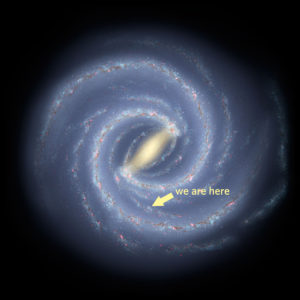Chapter Review Quiz
Short Essay Response
Type your answers in the box provided then print the page or take a screenshot and print OR email to your teacher.
Learning Goal Summary
Journal Entry
Astronomy Picture of the Day
Go to the web site for the Astronomy Picture of the Day. Use the “back” button at the bottom to scroll through the daily images for at least the past 15 days. (You can look at more if you wish.) Then:
- Choose your favorite picture from the ones you have viewed. Do a screen capture or print it so you can insert it into your personal journal for today’s date; be sure to include the caption.
- Write one or two sentences explaining why you chose this picture as your favorite. For example, it could be because of its colors, or they kind of things it shows, or other reasons that made you like it best among the pictures you viewed.
This journal activity can also make a great group activity. Instead of having all students look at the same recent set of “Astronomy Picture of the Day” images, you can assign each student a unique date and ask them to choose a favorite from at least 15 (but no more than 30) days’ worth of pictures starting with their date. Here is one procedure that you might use to assign the unique dates:
- The class should line up in birthday order. For example, a student with birthday Jan. 5 lines up ahead of one with Jan. 10, and so on.
- Teacher divides the line into groups of no more than 6. For example, if group size is 5, the first 5 students in birthday order are one group, the next 5 students are a second group, and so on.
- Based on the group size, cut out equal size small pieces of paper, writing a recent year on each one. For example, if you have 5 students in your group and it’s the year 2015, the 5 small papers will each have one of these years written on them: 2011, 2012, 2013, 2014, and 2015.
- Shuffle the papers, and each student in the group will draw one. Your ID is your birthday and your year. For example, if your birthday is March 7 and you drew year 2013, then your ID is “March 7, 2013.”
VIDEO COMING SOON!
If you prepare the small pieces of paper (with the years written on them) in advance, you should be able to complete the procedure above in about 10 minutes. Then ask students to do the following.
- Go to the Astronomy Picture of the Day web site. Use the “calendar” link near the bottom of the page to find the month for your ID date (such as March 2013), then choose the picture for your exact ID date (such as March 7, 2013).
- After you’ve looked at the picture for your date, use the “next” link (which look like “≥”) to see the picture for the following day (such as March 8, 2013), and then the next day, and so on. View at least 15 days but no more than 30 days worth of pictures following your date.
- Choose your favorite picture from the ones you have viewed. Do a screen capture or print it so you can insert it into your personal journal; be sure to include the caption. Then write one or two sentences explaining why you chose this one as your favorite.
- When all members of your group have finished, share your favorites with each other.
For the final step above, you can make it more formal by having each student speak briefly to the others in their group. Alternatively, you could print out and display all the selections in your class.







